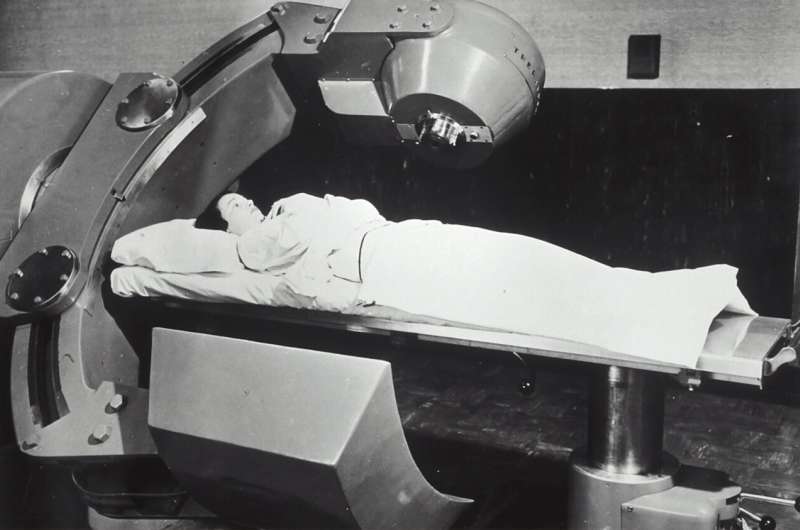
In a phase 2 single-institution study, UCLA Jonsson Comprehensive Cancer Center researchers found that dose-equivalent preoperative radiation therapy for extremity/trunk soft tissue sarcoma delivered in five days rather than over the conventional five weeks produced similar benefits and treatment side effects.
Dr. Ricky R. Savjani, a resident physician in the Radiation Oncology Residency Program at UCLA and a researcher at UCLA Jonsson Comprehensive Cancer Center, will present updated findings at ASTRO, the annual meeting of the American Society for Radiation Oncology.
“Preoperative radiation therapy is a key component of treatment for soft tissue sarcoma. It enables the treatment team to provide good local disease control, and the radiation side effects—fibrosis, lymphedema or joint stiffness—are generally manageable and well tolerated. But the standard five-week preoperative radiation course is a burden affecting patient quality of life,” Savjani said. “We’ve found that a five-day course provides excellent local control, and the rates of side effects and wound complications remain acceptable, with 52 patients followed for at least two years.”
Background
Results from an initial cohort have been previously reported. Here, Savjani presents updated findings with longer follow-up and additional patients from an expansion cohort.
Materials and methods
The initial cohort accrued between April 2016 and May 2018 and included 52 patients with histologically confirmed extremity or trunk soft tissue sarcoma (STS) planning to undergo preoperative radiation therapy (RT) followed by surgery. The primary endpoint of the initial cohort was the rate of grade ≥2 radiation morbidity (fibrosis, lymphedema, or joint stiffness) at two years.
An expansion cohort opened in October 2018 to compare wound complication rates between preoperative RT alone versus chemoRT and has enrolled an additional 47 patients. Patients received 30 Gy (RT alone) or 25 Gy (chemoRT) over five daily fractions to the primary tumor with standard margins.
Here we report on patients with primary localized STS who completed preoperative RT and surgery in the initial and expansion cohorts (N=79; chemoRT excluded). We assessed disease outcomes (local control and distant metastasis) and toxicity (grade ≥2 fibrosis, lymphedema, or joint stiffness) after two-year follow-up (N=93). Fibrosis and joint stiffness were graded using RTOG/EORTC criteria, and lymphedema by Stern’s scale. We also updated the major wound complication rate (defined per established criteria) after one-year follow-up.
Conclusions and impact
Of the 52 patients with minimum two-year follow-up, predominant histologic subtypes included undifferentiated pleomorphic sarcoma, spindle cell sarcoma or sarcoma NOS (N=24), myxofibrosarcoma (N=8), and myxoid liposarcoma (N=12). Median tumor size was 6.9 cm, and 15 pts had tumors ≥10 cm. At a median follow-up of two years, the local recurrence and distant metastasis rates were 6.4% and 24.7%, respectively. The rate of overall grade ≥2 radiation morbidity in this same group was 12.9%. Major wound complications were observed in 22 out of 91 (24.2%) evaluable patients.
Source: Read Full Article
